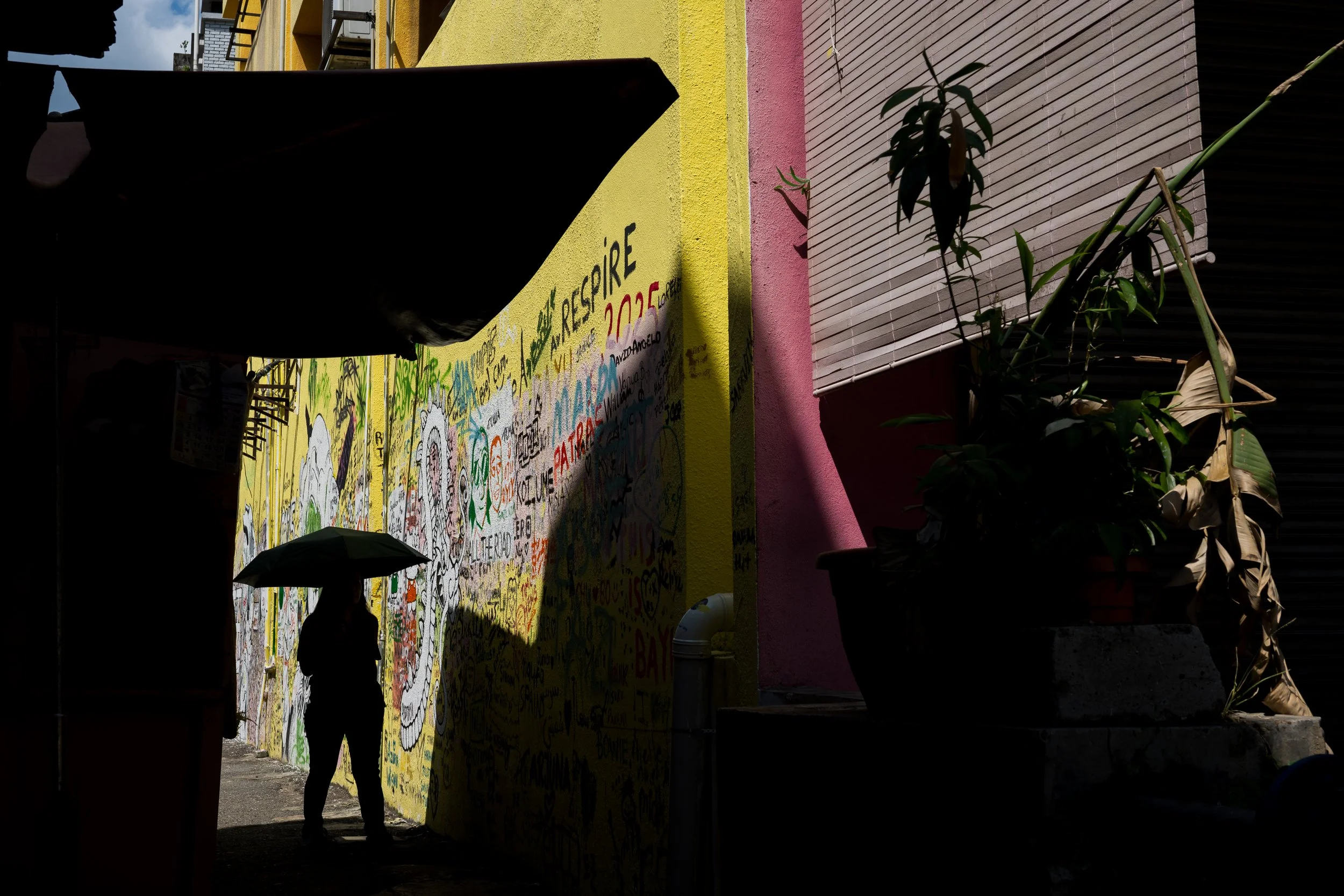#069: High Noon

Photographing at high noon is basically playing hide-and-seek with shadows.
Midday light gets a bad rep.
Harsh. Unflattering. Flat. Too hot to think straight. Most photographers I know avoid it completely, reserving their shutter counts for the soft golden fringes of morning or dusk. The “good” light.
Recently, I’ve managed to wander around during these harsh hours, in an attempt to try and find something compelling to photograph when the sun is at its most unforgiving—when it sits high overhead, casting everything into deep contrast and clean divisions. Even for me, this is not my favourite time to be out and about.
Shadows sharpen. Edges glow. People become silhouettes. The mundane flattens into shape and form. Under that kind of light, you stop looking for nuance and start looking for geometry. But sometimes the nuances do shine through. And that’s when the street becomes a graphic novel.
So recently, while fiddling with the Nikon Zf, I discovered the Highlight-Weighted Metering mode. It’s quietly tucked away among the usual suspects. Switch it on, and the camera starts exposing for the bright parts. Not the middle. Not the average. Just the highlights. Something I never knew it could do, as my past cameras never had this option and also probably because I never thought to look for it. Exposure compensation has been my ally for a long time, but this little feature, to expose for the highlights, is a gem of a find.
What a difference that makes in this kind of light.
It preserves the brilliance of the sun-struck pavements and white shirts and metal railings, without letting them blow out. And it lets the shadows fall deep—sometimes pure black, detail-less, unapologetic. It’s not for everyone. But it suits this kind of shooting: bold, contrasty, graphic. It's not new either; so many photographers use this technique/style, as I have too in the past on many occasions. But now I can toggle it on with a single switch, and it frees me up to compose the shots, without having to worry about balancing light and shadow.
I walk slower in this light too - not just because it’s so damn hot in KL these days. Waiting for figures to cross the frame just right, into the shadow, or out of it. An umbrella opens like punctuation. People wandering around across a band of brightness, leaving a tail of shadow. Window grills, construction scaffolding, street signs, overhead wires—they all play their parts. The sun draws the lines; I just try not to mess them up.
Sometimes it works. Sometimes it doesn’t. You either get the silhouette you want, or you don’t.
It’s funny. The same light that makes people squint and cars overheat, that flattens or enhances colours and makes skin tones unforgiving—that same light can turn a city into pure design. Shapes and shadows, contrast and cutouts. It just asks for a different way of seeing.
You don't photograph midday light despite what it is. You photograph it because of what it is.
And now, with one tiny setting change on the Nikon Zf, it feels like the camera’s finally seeing it the way I do under these conditions.
I guess I have to keep playing around with other settings on this camera to find out more fun things it can do.
As mentioned, most of these shots were taken during high noon, and some in the early mornings, where I concentrate on finding the light. I may venture down this path again soon, now with the knowledge that I can easily manage it on the camera.
Enjoy the photos below.
Cheers.
“Each player can’t cast more than one spell each turn.”































